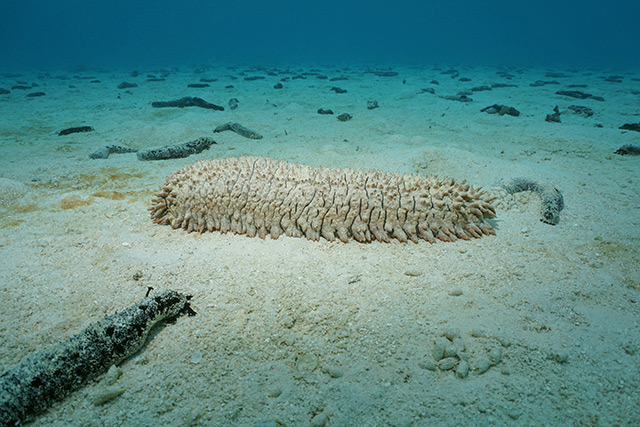
The oceans cover 71 percent of the Earth's surface, of which 90 percent is considered deep sea. Despite this vastness, the seas and oceans are the least explored environments on Earth; only around 0.0001 percent of the seabed has been investigated.
Advances in technology have made it possible to explore some of the deepest reaches of the oceans, which has led to the discovery of both previously undiscovered species and ones that were thought to have gone extinct.
However, these technological advances have also made commercial exploitation of resources from the ocean floor a real possibility.
Researchers from the University of Exeter and Greenpeace said that despite the relatively poor knowledge about deep-sea environments, these habitats tend to be sensitive to human-mediated disturbances and may take a long time to recover – possibly decades, centuries or even millennia, if they can recover at all.
"As we learn more about deep sea ecosystems and the role of oceans in mitigating climate change, it seems wise to take precautions to avoid damage that could have long-lasting and unforeseen consequences," said Dr. David Santillo, a marine biologist and senior Greenpeace scientist at the University of Exeter.
Seabed mining mainly involves mineral extraction over wide areas of the ocean floor, potentially leaving a vast "footprint" on the deep-sea ecosystems in and around the mineral deposits.
The International Seabed Authority (ISA) regulates human activities on the seabed beyond the continental shelf. The ISA has issued several contracts for mineral exploration and continues to develop rules for commercial mining. At the time of this writing, the ISA is in the process of developing a regulatory framework for managing mining in both the seabed area and the high seas water column above (the Area). The legal framework for the Area is provided by the United Nations Convention on the Law of the Sea (UNCLOS).
There is a growing demand for resources such as minerals and metals, including for use in developing new technology, which has sparked a renewed interest in mining the ocean floor. In fact, some operations are already taking place, generally in relatively shallow depths near national coastlines.
There are many considerations concerning seabed mining, such as legal issues, predicting the scale and extent of impact, as well as monitoring and regulating mining activity once it takes place. Therefore, the researchers have proposed alternatives to seabed mining, including substituting scarce metals with minerals possessing similar properties. In addition, they are looking into more effective recycling components from disused products and wastes. (Related: Treasure trove of rare earth metals discovered on sea floor; will mining devastate ocean ecosystem?)
However, Dr. Santillo believes that cutting overproduction and overconsumption of consumer goods may be the ultimate solution to finally diminish the demand for seabed mining.
"Rather than using human ingenuity to invent more and more consumer products that we don't actually need, we could deploy it instead to build goods that last longer, are easier to repair and make better use of the limited natural resources we have," he said. "As governments prepare to set the rules and the first companies gear up to mine, now is the time to ask whether we just have to accept seabed mining, or should instead decide that the potential damage is just so great that we really need to find less destructive alternatives."
Effects of marine habitat destruction
The loss and destruction of marine habitats due to man-made disturbances will have lasting effects on the environment and the countless species that depend on these ecosystems. Some of the major consequences of marine habitat destruction include:
- Low oxygen concentration – Contamination of the air and water due to pollution may lower oxygen concentration in the water, to the extent that it can barely support aquatic life.
- Migration of marine animals – Animals will be forced to find new homes once their habitat can no longer support life. Other existing ecosystems will be crowded with migrating animals, and the resident species will have more competition for feeding and breeding areas.
- Food reduction – Humans depend on marine ecosystems for food, and depleted marine resources may ultimately lead to food supply reduction.
- Extinction – The biggest consequence of extreme ecological conditions is death of animal and plant species.
The past decade has seen a rising interest in obtaining resources from the ocean floor, and with it comes an increasing initiative to survey, monitor and understand deep-sea ecosystems. To know more about such initiatives in protecting the environment, visit Environ.news.
Sources include:
Please contact us for more information.























